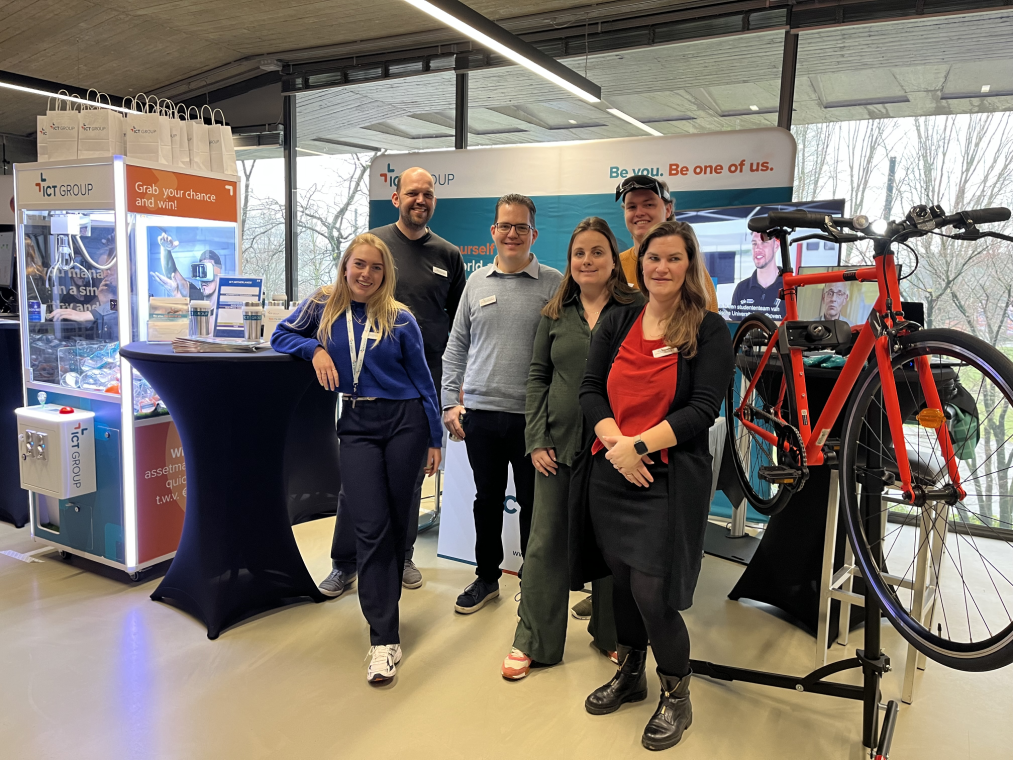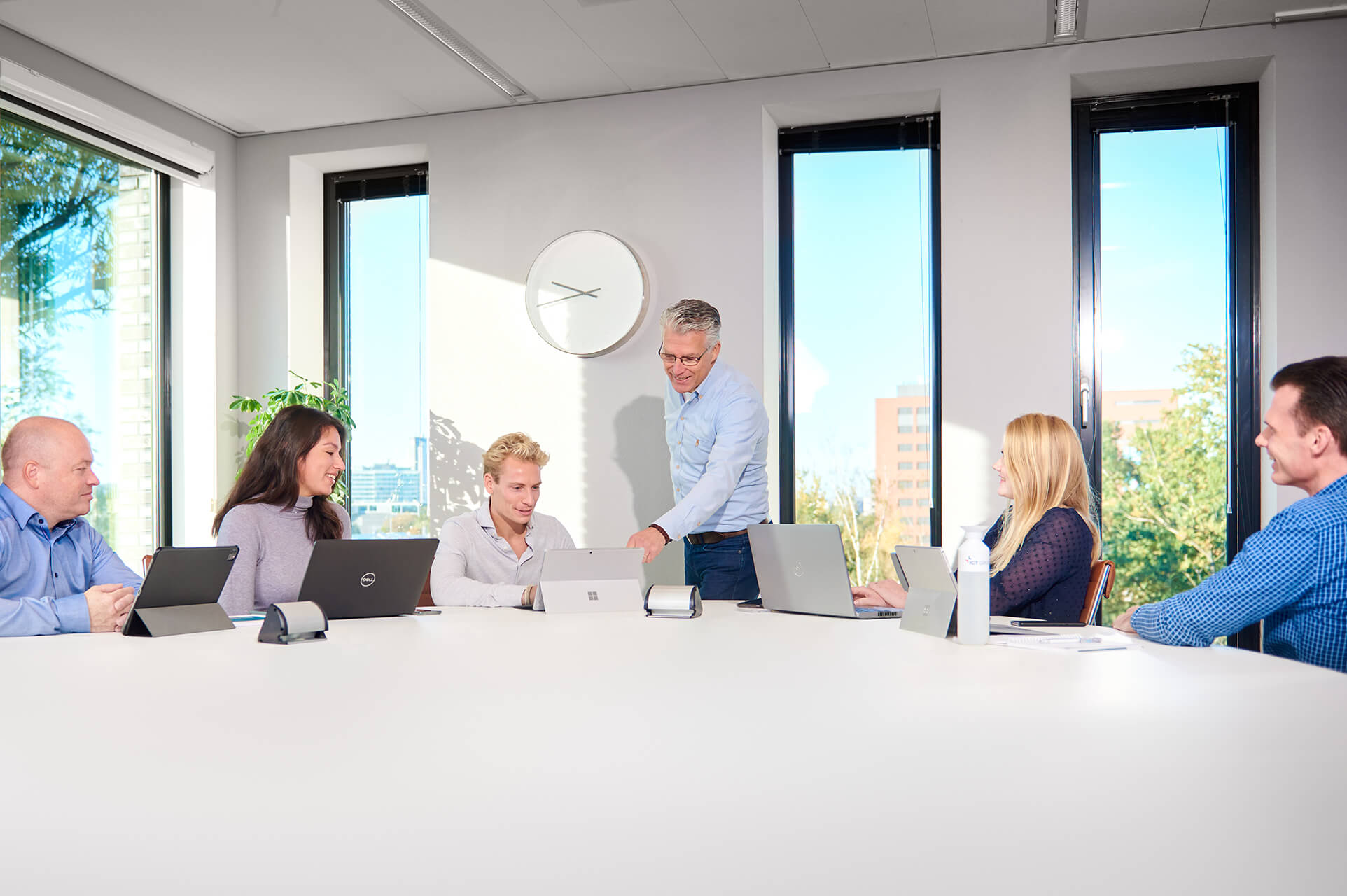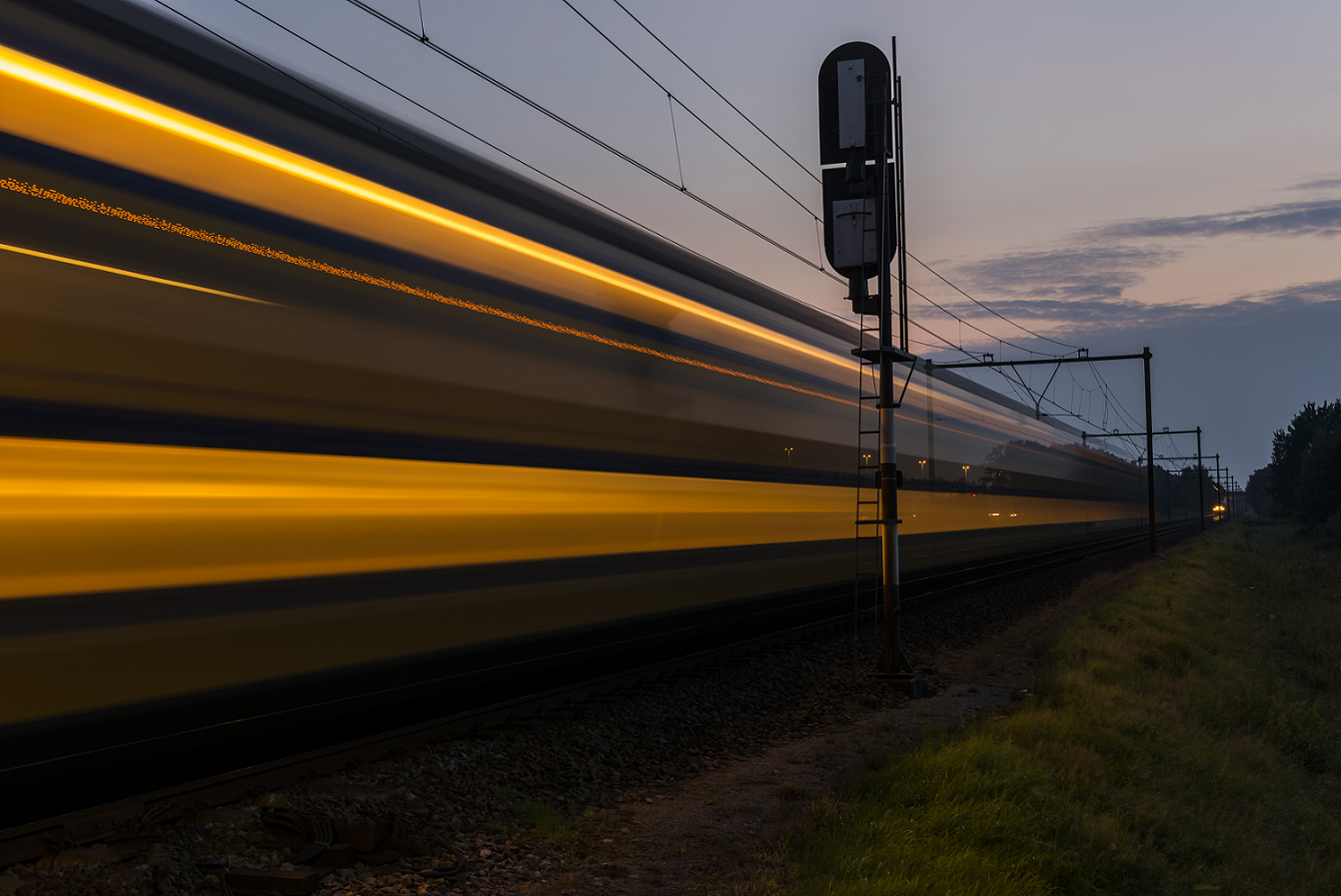
This raises a host of new issues. How can all vehicles be charged on time and also at the most favourable rate? The answer lies in smart hubs.
A smart hub is a central control point that connects other devices, integrating mobility and energy. Not only does mobility have the potential to be smarter, it also needs to be smarter. “With the increase in zero-emission vehicles – not only buses but cars and trucks too – we have no choice but to use smart solutions,” InTraffic’s Martijn van Aartrijk says. “It’s not a question of if, but when the pressure will start to rise.”
Together with the energy team of ICT Group, Goudappel Coffeng and Stevin, InTraffic represents a consortium that deals with the planning, design, development and operation of smart hubs. The four companies combine vast knowledge and decades of experience in the areas of nodes, mobility, tech and energy. By joining forces, the partners have been able to develop a plan that maximises the potential of smart hubs.
Cooperation
Cooperation is the key to this plan. You can make things greener, more cost-effective and more efficient with a well-thought-out design and smart technology, but you need partners to accomplish these goals. Because transport operators, local authorities, transport authorities and grid operators all benefit from smart hubs. “In a world in which you all want to deliver affordable mobility using sustainable methods, you have to understand each other instead of putting it all in the hands of one company,” Van Aartrijk says.
An integrated approach may create a situation where buses are charged in dynamically. “Only when it is necessary and cost-effective, so that you don’t have to pay the highest price, but can also prevent network overload,” says Eric van der Laan of ICT Energy. This requires pooling a lot of information and looking for the golden mean so that all parties evenly share the costs and the benefits.
The consortium plays an important role in this process. Van Aartrijk: “You have to keep track of the energy market, be aware of network load, know the demand and supply, which buses should be given priority, how long they can stop at a particular station, you name it. There is a lot of local optimisation involved.”
Affordable
A smart hub means that different markets are brought together. This not only ensures that the available power can be distributed, but also that zero emissions as a total construct is and remains affordable.
Van der Laan: “You can come up with solutions that create flexibility. If you create a facility to charge buses more flexibly, you can also use this to make money in the energy market.”
The smart node also bucks the trend when it comes to loading. “Smart charging is mainly about capacity and availability; a smart hub goes one step further and the charging strategy is determined on the basis of transport planning. What is available and who has the highest priority?”
In the end, travellers in in particular should experience the benefits by being able to travel easily using a variety of modes. Van der Laan: “We are also talking about sharing cars, electric (shared) bicycles and steps. More and more business models are emerging and more and more players are seeing a niche in this market.” Van Aartrijk: “If you link this to MaaS, you not only have the ideal travel information facility, but also the key to planning when you need a specific type of energy.”
Start small
But where do you start with so many people involved? Van der Laan: “If you want to be able to create smart hubs, you should not try to solve the problem in one go from the beginning. Instead, you should get all the parties involved on board right from the beginning, but what’s especially important is that you start on a small scale. That enables you to benefit from valuable lessons learned.” It seems only a matter of time before the first innovative new solutions will be available. “This could be done with a new form of charging infrastructure, or how you combine sustainable generation with the charging process.”
It will take a bit more persuading and a dose of realism before that actually happens, while some initial reluctance also needs to be overcome in order to tackle the issue at an organisational level and with joined effort. Here too, a solution is to start on a small scale, Van Aartrijk says. In any case, we need to start taking steps right now.
“We are seeing a strong demand in the market. Electrification of large bus stations has already been on the horizon for some time. However, this is often still seen from a rather limited perspective: one transport company and one type of bus. This is not really a hub concept, but nevertheless it’s a start. Some urban developers are now also focusing on areas that only allow sustainable vehicles. Those areas need a concept such as a smart hub.”
Read the full article by OVPro in Dutch


